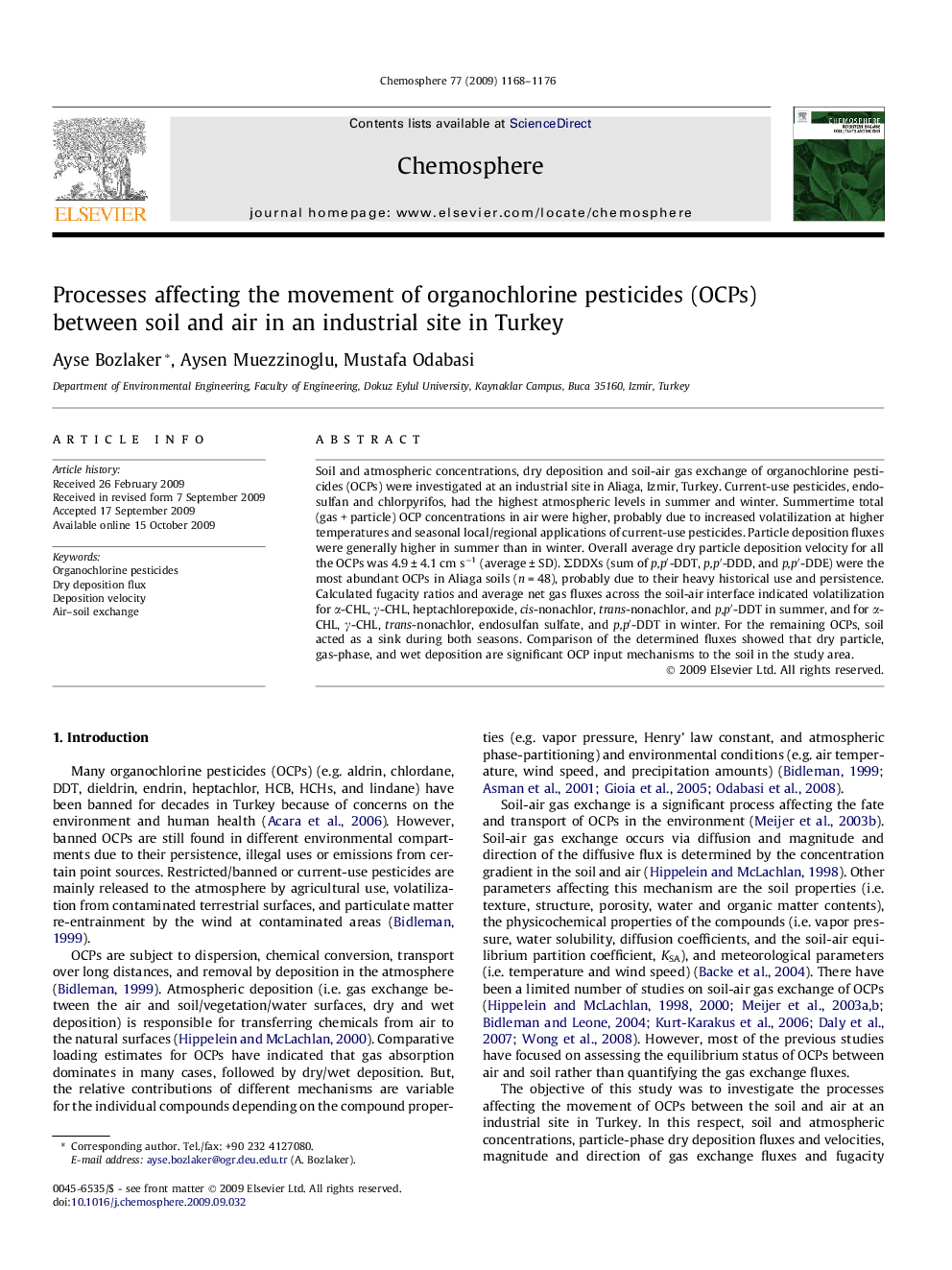| Article ID | Journal | Published Year | Pages | File Type |
|---|---|---|---|---|
| 4411979 | Chemosphere | 2009 | 9 Pages |
Soil and atmospheric concentrations, dry deposition and soil-air gas exchange of organochlorine pesticides (OCPs) were investigated at an industrial site in Aliaga, Izmir, Turkey. Current-use pesticides, endosulfan and chlorpyrifos, had the highest atmospheric levels in summer and winter. Summertime total (gas + particle) OCP concentrations in air were higher, probably due to increased volatilization at higher temperatures and seasonal local/regional applications of current-use pesticides. Particle deposition fluxes were generally higher in summer than in winter. Overall average dry particle deposition velocity for all the OCPs was 4.9 ± 4.1 cm s−1 (average ± SD). ΣDDXs (sum of p,p′-DDT, p,p′-DDD, and p,p′-DDE) were the most abundant OCPs in Aliaga soils (n = 48), probably due to their heavy historical use and persistence. Calculated fugacity ratios and average net gas fluxes across the soil-air interface indicated volatilization for α-CHL, γ-CHL, heptachlorepoxide, cis-nonachlor, trans-nonachlor, and p,p′-DDT in summer, and for α-CHL, γ-CHL, trans-nonachlor, endosulfan sulfate, and p,p′-DDT in winter. For the remaining OCPs, soil acted as a sink during both seasons. Comparison of the determined fluxes showed that dry particle, gas-phase, and wet deposition are significant OCP input mechanisms to the soil in the study area.
